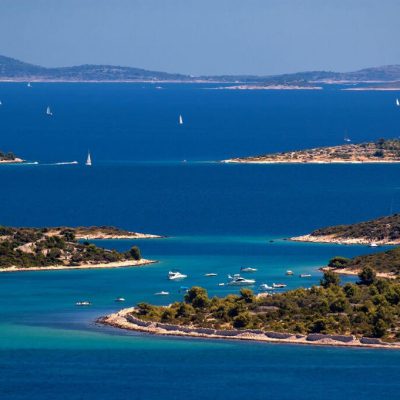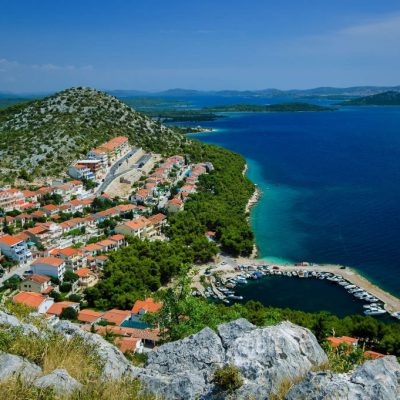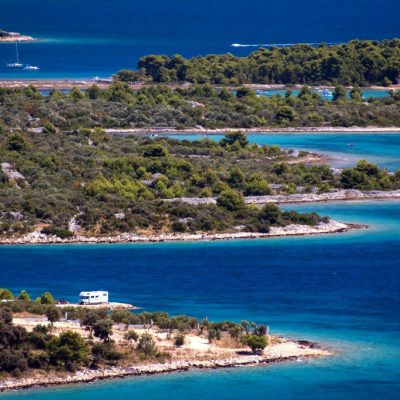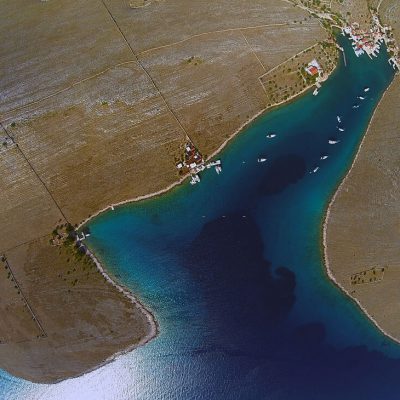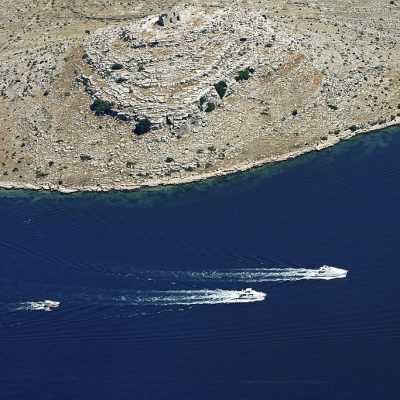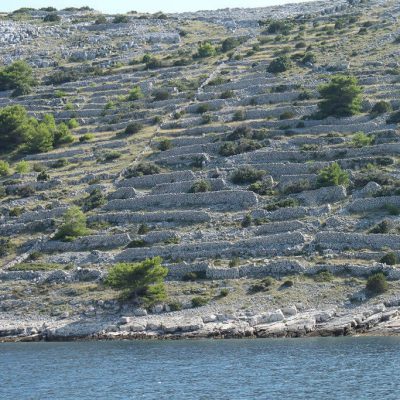Kornati National Park is part of a group of nearly 150 mostly uninhabited islands south of Pašman and Dugi Otok, near Zadar. The park’s 89 islands, islets, and reefs are scattered across an area of about 78 sq km of land and 207 sq km of sea.
About
Kornati National Park is part of a group of nearly 150 mostly uninhabited islands south of Pašman and Dugi Otok, near Zadar. The park’s 89 islands, islets, and reefs are scattered across an area of about 78 sq km of land and 207 sq km of sea.
Kornati’s unusual landscape of mostly barren, irregular karst terrain is a submerged mountain range; the visible parts are ancient mountaintops and valleys that now are islands and channels. Less than a quarter of the Kornati area is land, while the rest of the park is under the sea, and the park’s underwater landscape is perhaps its most fascinating feature. Kornati are renowned as a diver’s paradise with unusual rock formations where many species of fish and plant life thrive.
There are no permanent residents on the Kornati islands, but some people do have houses that they use when tending sheep or taking care of their crops.
Traffic
There is no ferry service between the Kornati Islands and the mainland, and the only way to get there is by boat. You’ll have more travel flexibility if you have your own vessel, but you can also book excursions to the islands from Zadar, Šibenik, or Split.
Kornati also have 16 bays with mooring areas designated for boaters who want to drop anchor overnight.
Visit
Kornat is the largest of the park’s islands and the site of the 6th-century fortress of Toreta, an excellent example of Byzantine architecture.
The most important places on the Kornati islands are: the shallow channel Mala Proversa, the oval-shaped Taljurič island, Špinuta Bay, Stivina Bay, the fourth largest island Levrnaka, the second largest karst rock-area Tarac, Svršata Vela island, Mana island, Piškera island, Panitula Vela island, the picturesque Lavsa Bay, the resort island Ravni Žakan, Smokvica Vela island, the Opat peninsula, Samograd island, the Purara reserve for marine life, Vrgada and Gangarol islands.
The names of the islands Babina Guzica and Kurba Vela, which in Croatian refer to buttocks and prostitution, offer an opportunity to explain the many vulgar names officially given to many places in the Kornati archipelago. When Austrian surveyors came to record the archipelago at the end of the 19th century, their local guides mocked them by making up vulgar names for the various locations.
The lake Mir, a salt lake within the Telašćica Nature Park, is a sunken karst depression with a rocky, sludgy and sandy bottom. The water of the lake Mir is saltier than the water of the surrounding open sea.



